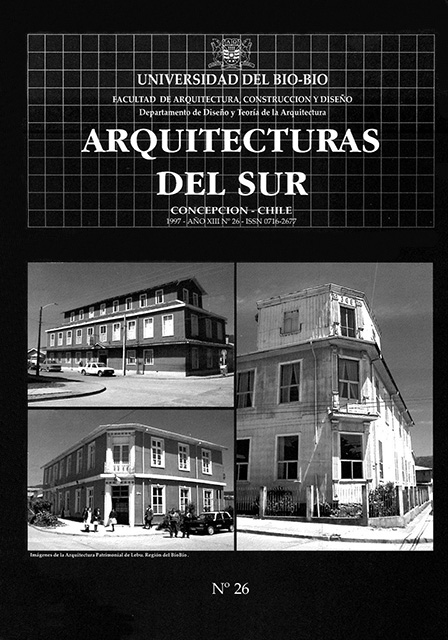Número y proporción en arquitectura. Desde Vitruvio a Le Corbusier
Abstract
Referirse a obras como el Partenón en la Época Clásica; a la Villa Capra-Rotonda en Vicenza durante el Renacimiento, o a La Unite d'Habitation en Marsella durante el Movimiento Moderno, es descubrir en la historia de la arquitectura la fascinación de muchos arquitectos por las teorías de número y proporción.
Arquitectos que en el pasado crearon obras de relevancia en nuevos estilos arquitectónicos, basaron sus conocimientos sobre métodos matemáticos de diseño. Alberti, Palladio y Le Corbusier, entre otros, usaron teorías de número y proporción en la propuesta de sus obras más significativas.
Downloads
Downloads
Published
How to Cite
Issue
Section
License
The content of the articles published in each issue of Arquitecturas del Sur is the sole responsibility of the authors and does not necessarily represent the opinion of University of the Bío-Bío.
The authors will maintain their copyright; however, they will guarantee the journal the right to first publication and dissemination of their work. The publication of the article in Arquitecturas del Sur will be subject to the Creative Commons International license (CC BY-SA) that allows others to adapt: remix, transform and build on the material for any purpose, even commercially; share: copy and redistribute the material in any medium or format, as long as the authorship and first publication in this journal are acknowledged by citing them correctly, and their new contributions are under a license with the same terms.














 Programa de Información Científica/Concurso Fondos de Publicación de Revistas Científicas 2018/ Proyecto Mejoramiento de Visibilidad de Revistas UBB (Código:FP180007)
Programa de Información Científica/Concurso Fondos de Publicación de Revistas Científicas 2018/ Proyecto Mejoramiento de Visibilidad de Revistas UBB (Código:FP180007) 
